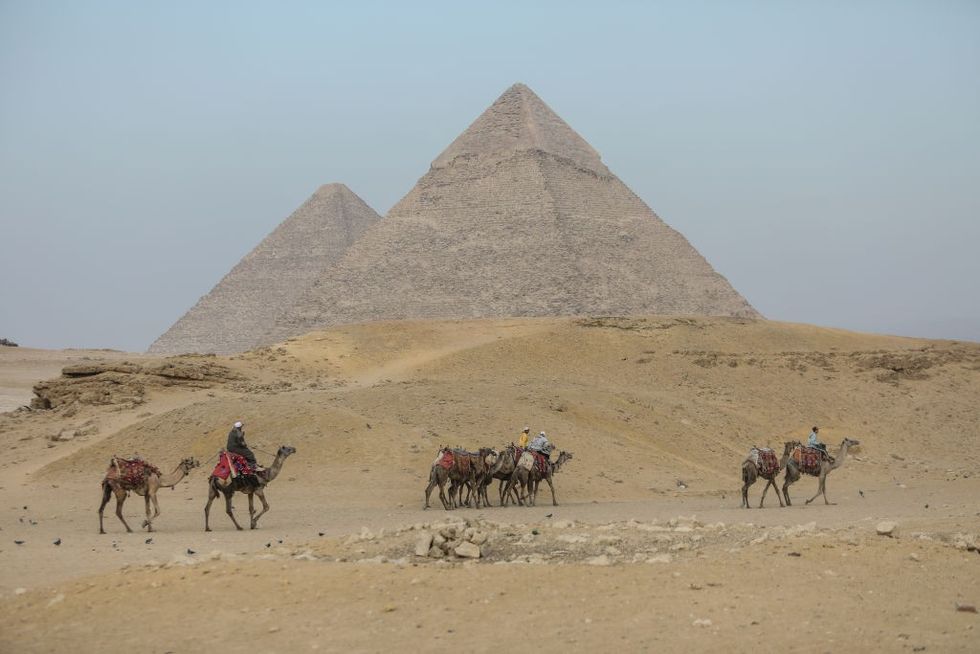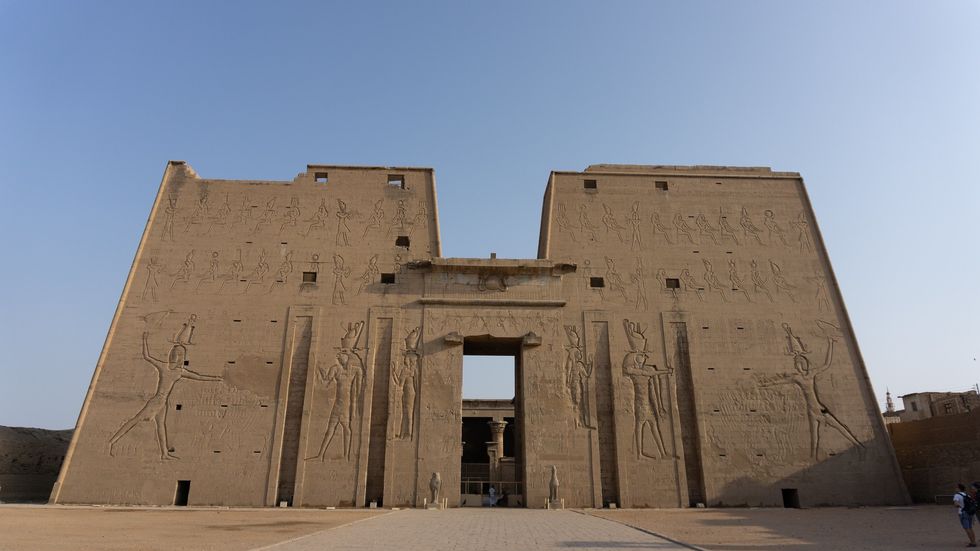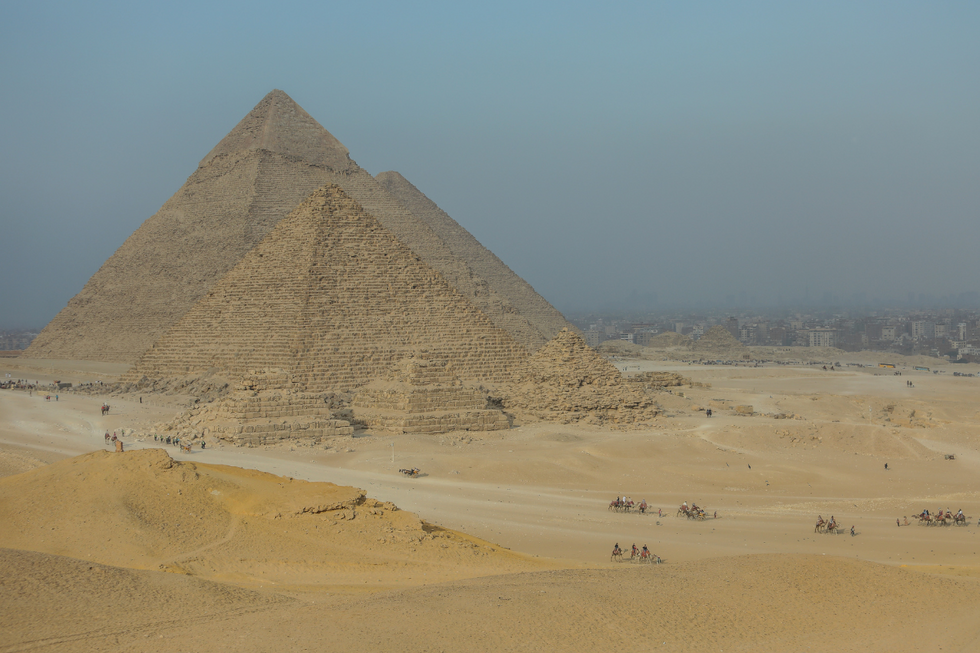WATCH: Dr. Mostafa Waziry investigates the iconic Egyptian sculpture
GB News
The new research into the Pyramids of Giza detected hidden chambers
Don't Miss
Most Read
Trending on GB News
A vast underground city stretching thousands of feet beneath Egypt's iconic Pyramids of Giza discovered by Italian scientists has reignited controversial theories about the ancient structures' origins.
Using ground-penetrating radar, researchers detected massive shafts and chambers hidden beneath the Khafre Pyramid.
The discovery has breathed new life into fringe theories about lost civilisations.
The controversial research, which has not yet been peer-reviewed or published in a scientific journal, reportedly identified structures extending more than 4,000 feet below the surface.

The Great Pyramid of Giza and the Pyramid of Khafre have long fascinated researchers
Getty
The scans captured enormous chambers and shafts with staircases around them, forming what researchers described as a tuning fork shape along the northern side.
Alternate historians like Graham Hancock, a frequent guest on Joe Rogan's podcast, have long suggested that a highly advanced prehistoric society was wiped out by a global cataclysm around 12,800 years ago.
This theory proposes that a comet impact caused floods and chaos that erased most traces of this civilisation.
The survivors allegedly passed down knowledge of astronomy, engineering and sacred architecture to later cultures, including ancient Egyptians.
Dr James Kennett, a geologist at the University of California Santa Barbara, told the Daily Mail there's geological evidence supporting the comet-impact hypothesis.
LATEST DEVELOPMENTS
- Archaeology breakthrough as expert claims to have discovered 'true location of Garden of Eden'... but it may now be a tourist hotspot
- Ancient Egyptian inscription discovered in Jordan in major 'first-of-its-kind' breakthrough
- Archaeology breakthrough: Tomb of ancient Egyptian prince discovered behind 'fake' 4.5m granite door
 The Temple of Edfu could reveal the secrets about the civilisation WikICommons
The Temple of Edfu could reveal the secrets about the civilisation WikICommonsHe points to impact evidence found in Syria, around 1,000 miles from Giza, suggesting debris could have triggered massive flooding from the Mediterranean Sea and Nile River. This flooding potentially engulfed parts of ancient Egypt.
The flood narrative aligns with ancient Egyptian mythology found in hieroglyphs at the Temple of Edfu, located 780 miles south of Giza.
These inscriptions, known as the Edfu Building Texts, reference a devastating flood that destroyed a mysterious civilisation called the "Eldest Ones". The texts describe a "sacred domain" in the Giza region that was destroyed by an "enemy serpent".
Andrew Collins, a researcher of prehistoric civilisations, believes the "enemy serpent" could be a metaphor for a comet, as ancient cultures often used serpents to symbolise celestial events.
"[The text describes] them storing sacred objects in an underground structure called the Underworld of the Soul," Collins said. "This I am sure relates to Giza's cave system and any structures it may contain."
Other Egyptologists reject these interpretations, arguing the Edfu inscriptions are purely symbolic with no direct reference to Giza. They view the texts as mythological rather than historical accounts.
Collins counters by pointing to sophisticated ancient cultures like the Gravettian peoples of Russia, who built rectilinear dwellings and wore tailored clothing 30,000 years ago.
The discovery was made by Filippo Biondi of the University of Strathclyde, Egyptologist Armando Mei, and Corrado Malanga from Italy's University of Pisa.
 The researcher also noted thick salt encrusting found inside the Great Pyramid (Stock)GETTY
The researcher also noted thick salt encrusting found inside the Great Pyramid (Stock)GETTYUsing radar pulses, the team mapped extensive subterranean spaces that could potentially rewrite the history of one of the world's most iconic sites.
Whether their findings withstand academic scrutiny remains to be seen.








